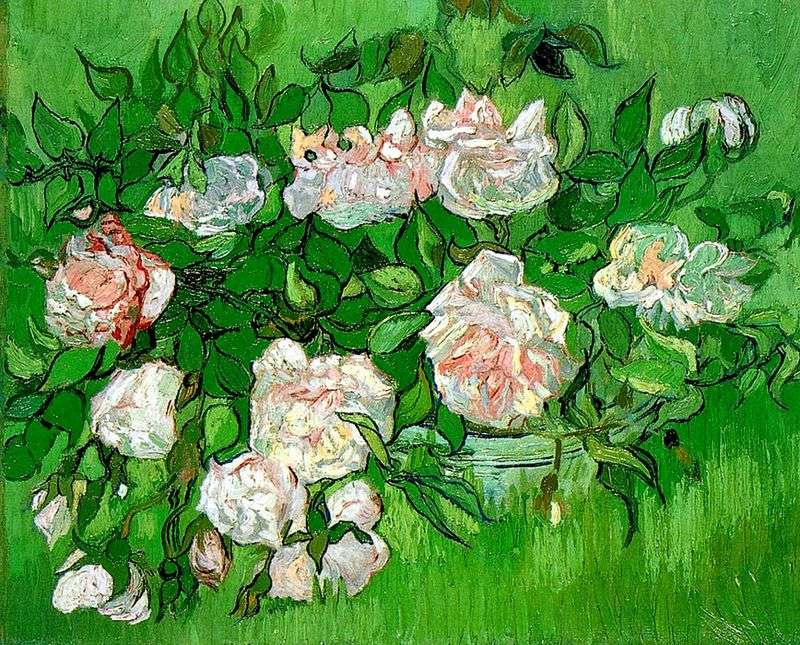
In 1990, Van Gogh moved to the small town of Auvers-sur-Oise in northern France. The artist hoped that a mild climate would help him bring his thoughts and feelings in order, beneficially affecting his condition. For three months, lived under the supervision of Dr. Gachet, Van Gogh wrote about thirty works. He worked in the open air, capturing the views of the city and its picturesque surroundings.
Walking around the city, Van Gogh found several houses that were very much like Dutch huts. He wrote them repeatedly, imprinting houses from different points of view.
In the picture there are no bright contrasts, characteristic for the Paris and Arles periods. Its restrained color scheme is built on a combination of calm pastel tones. Only the bright red roof of one of the houses stands out with a colorful accent on this background. But this restraint contrasts with the dynamics of the composition and the temperamental manner of performance.
In the picture there are no straight lines – the forms of houses located on a descending diagonal are distorted. Swirl eddies form the outlines of swirling clouds, twisted rings of white smoke, twisted greens in the foreground. In a disturbing manner of performance, there is a sense of hidden tension.
 Houses by Vincent van Gogh
Houses by Vincent van Gogh Village Street in Over by Vincent Van Gogh
Village Street in Over by Vincent Van Gogh Farmhouse with two figures by Vincent Van Gogh
Farmhouse with two figures by Vincent Van Gogh Still life: pink roses by Vincent Van Gogh
Still life: pink roses by Vincent Van Gogh Landscape with crew and train in the background (Landscape in Auvers after rain) by Vincent Van Gogh
Landscape with crew and train in the background (Landscape in Auvers after rain) by Vincent Van Gogh Pink roses by Vincent Van Gogh
Pink roses by Vincent Van Gogh Houses: Recollection of the North by Vincent Van Gogh
Houses: Recollection of the North by Vincent Van Gogh Peach in bloom by Vincent Van Gogh
Peach in bloom by Vincent Van Gogh